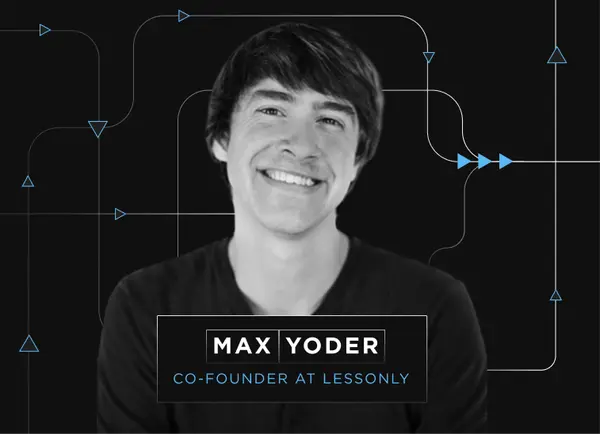
Starting a new venture involves navigating numerous challenges, one of which is effectively communicating your business vision. Two essential tools in this process are the business plan and the pitch deck. While both are crucial, they serve different purposes and are used at different stages of your startup journey. In this article, we'll explore the key differences between business plans and pitch decks, what each includes, the level of detail required, the creation process, and specific use cases. Understanding these distinctions will help you use each tool to your advantage, ensuring you’re well-prepared to impress investors and guide your business to success.

Business Plans vs Pitch Decks - An Overview
When raising capital for your startup, both business plans and pitch decks are essential tools, each serving distinct purposes.
A business plan is a detailed document outlining your business’s objectives, strategies, market analysis, and financial projections. It provides a comprehensive roadmap for your business, guiding long-term strategic decisions and demonstrating viability to stakeholders such as banks and grant providers.
In contrast, a pitch deck is a concise, visually-driven presentation designed to quickly capture the interest of potential investors. It typically includes key highlights of your business, such as the problem you’re solving, your solution, market opportunity, business model, and team. The goal is to secure meetings and generate interest from venture capitalists, angel investors, and during startup competitions.
Both tools are crucial in fundraising, but they are used at different stages and for different audiences.
Business Plan
A business plan is a comprehensive document that outlines your business's objectives, strategies, market analysis, organizational structure, and financial projections. Its primary purpose is to serve as a detailed roadmap for your business, guiding strategic decisions and demonstrating the viability and potential of your venture to various stakeholders.
The business plan is essential for several key reasons:
- Securing Funding: It provides potential investors, banks, and grant providers with an in-depth understanding of your business model, financial forecasts, and strategic plans, helping to secure necessary funding.
- Strategic Planning: It acts as a guide for internal decision-making, helping founders and management teams align on goals and strategies.
- Attracting Talent: A well-articulated business plan can attract co-founders, key hires, and partners by clearly outlining the business's vision and potential.
Use cases for a business plan include applying for loans, pitching to investors, and guiding internal strategy development. Each of these scenarios relies on the detailed and structured information that a business plan provides, making it an indispensable tool for startup founders.
Related resource: Startup Business Plan
Pitch Deck
A pitch deck is a concise, visually-driven presentation designed to quickly capture the interest of potential investors. It typically consists of around 10-20 slides that highlight the key aspects of your business, such as the problem you’re solving, your solution, market opportunity, business model, and team.
The primary purpose of a pitch deck is to provide a snapshot of your business that is engaging and easy to understand, aiming to secure meetings and generate interest from potential investors. Unlike the comprehensive nature of a business plan, a pitch deck is meant to be high-level and visually appealing, making it an effective tool for initial presentations.
Use cases for a pitch deck include:
- Investor Meetings: Pitching to venture capitalists and angel investors to secure funding.
- Startup Competitions: Presenting at demo days and competitions to gain exposure and interest.
- Partnership Discussions: Engaging potential partners and stakeholders by providing a clear and compelling overview of your business.
The pitch deck serves several important functions:
- Generating Interest: It is designed to grab the attention of venture capitalists, angel investors, and other stakeholders, encouraging them to seek more detailed information.
- Communicating Vision: The pitch deck helps convey your business idea succinctly, showcasing the problem you’re solving, your solution, and your unique selling points.
- Facilitating Meetings: A compelling pitch deck can lead to follow-up meetings, providing opportunities to delve deeper into your business plan and financials.

Related resource: Building Your Pitch Deck
What is Included in Each One
Understanding the structure and key components of business plans and pitch decks is crucial for effectively using each tool in your fundraising efforts.
A detailed and comprehensive business plan covers elements such as market analysis, financial projections, and strategic planning. In contrast, a pitch deck is concise and visually engaging, highlighting key aspects like the problem you’re solving, your solution, and your business model.
This section will provide an overview of what to include in each, highlighting the differences to help you tailor them to your needs.
Business Plan
A business plan is a detailed and comprehensive document that covers various aspects of your business. Key components typically include:
- Executive Summary: A brief overview of your business, including your mission statement, product or service offering, and basic information about your company’s leadership, employees, and location.
- Company Description: Detailed information about your business, including the problems you’re solving, your target market, and what makes your business unique.
- Market Analysis: An examination of your industry, market size, expected growth, and competitive landscape.
- Organization and Management: An outline of your business’s organizational structure, details about the ownership, and profiles of your management team.
- Products or Services Line: Detailed descriptions of your products or services, including the lifecycle of each product, and how they benefit your customers.
- Marketing and Sales Strategy: Your plan for reaching your target market, including pricing, advertising, and sales strategies.
- Funding Request: If you’re seeking funding, this section outlines your current funding requirements, future funding requirements over the next five years, and how you intend to use the funds you receive.
- Financial Projections: Detailed financial forecasts, including income statements, cash flow statements, and balance sheets for the next three to five years.
- Appendix: An optional section that includes resumes, permits, lease agreements, legal documentation, and other pertinent information.
Pitch Deck
A pitch deck is a more concise and visual presentation focusing on highlighting your business's key aspects. Key components typically include:
- Title Slide: The name of your business and a tagline or short mission statement.
- Problem Statement: A description of the problem your business aims to solve.
- Solution: An overview of your product or service and how it addresses the problem.
- Market Opportunity: Information on your target market and the potential market size.
- Business Model: An explanation of how your business will make money.
- Traction: Evidence of your business’s progress and momentum, such as sales figures, customer testimonials, or user growth metrics.
- Competition: An analysis of your competitors and your competitive advantages.
- Go-to-Market Strategy: Your plan for attracting and retaining customers.
- Financials: High-level financial projections and key metrics.
- Team: Information about your founding team and key advisors.
- Use of Funds: How you plan to use the investment you’re seeking.
- Closing Slide: A summary of your pitch and a call to action, often including your contact information.
Related resource: Key Slides In Your Pitch Deck
Each of these components plays a crucial role in communicating the essential aspects of your business to different audiences. While the business plan is thorough and detailed, the pitch deck is designed to be engaging and to the point, helping you quickly capture the interest of potential investors.

What Level of Detail is Needed for Each One?
Business plans and pitch decks differ significantly in the level of detail they require. Business plans are comprehensive and detailed, covering strategic projections and in-depth analyses. In contrast, pitch decks are high-level, focusing on engaging visuals and key highlights to quickly capture investor interest.
Business Plan
A business plan requires a high level of detail to comprehensively outline your business’s strategic vision, operational structure, and financial projections. Each component must be thoroughly developed to provide a clear roadmap for the business and demonstrate its potential to stakeholders. Here's a breakdown of the required level of detail for each key component:
- Executive Summary: This section should offer a concise yet comprehensive snapshot of your business, including your mission statement, the products or services you offer, and basic company information such as leadership, employees, and location. While brief, it should be compelling enough to attract further interest.
- Company Description: This part should delve deeply into your business, explaining the problems you're solving, your target market, and what makes your business unique. It should provide a clear picture of your business’s purpose and the value it offers to customers.
- Market Analysis: This section should include in-depth research on your industry, including market size, expected growth, and trends. A detailed competitive analysis is also crucial, highlighting your competitors' strengths and weaknesses and how you plan to differentiate your business.
- Organization and Management: Provide detailed profiles of your management team, including their backgrounds, expertise, and roles within the company. An organizational structure chart can be helpful here, showing how different roles and departments interrelate.
- Products or Services Line: Offer detailed descriptions of your products or services, including their lifecycle, development stages, and benefits to customers. Explain how your offerings meet the needs of your target market and any plans for future development or expansion.
- Marketing and Sales Strategy: This section should outline your strategies for reaching your target market, including pricing models, advertising plans, sales tactics, and distribution channels. Be specific about how you will attract and retain customers, including any partnerships or collaborations.
- Funding Request: If you are seeking funding, clearly outline your current and future funding needs, specifying how much you need, how you plan to use the funds, and any future funding requirements over the next five years. Provide a clear plan for how the funds will help achieve your business goals.
- Financial Projections: Provide detailed financial forecasts, including income statements, cash flow projections, and balance sheets for at least the next three to five years. This section should demonstrate your business’s financial viability and growth potential, with assumptions clearly stated.
- Appendix: Include any additional documents that support your business plan, such as resumes, permits, legal documentation, market research data, and any other relevant materials. The appendix should provide supporting evidence for the claims and projections made in your business plan.
Each of these components should be well-researched and thoroughly explained, offering a clear and detailed picture of your business and its potential. A comprehensive business plan not only helps in securing funding but also guides strategic decision-making and helps attract key partners and talent.
Pitch Deck
A pitch deck requires a concise yet engaging level of detail to capture the interest of potential investors and stakeholders effectively. Each component should be clear, visually appealing, and focus on the key highlights of your business. Here’s an outline of the necessary components and the level of detail required:
- Title Slide: Include your business name, logo, and a brief tagline or mission statement. This slide should set the tone and provide a quick grasp of your business identity.
- Problem Statement: Clearly and succinctly describe the problem your business aims to solve. Use visuals or anecdotes to illustrate the problem’s significance and relevance to your target market.
- Solution: Provide an overview of your product or service and explain how it addresses the problem. Highlight the unique aspects of your solution and how it stands out from existing alternatives.
- Market Opportunity: Present key information about your target market, including market size, growth potential, and trends. Use charts or graphs to make the data visually compelling and easy to understand.
- Business Model: Explain how your business will make money. Include details on your revenue streams, pricing strategy, and any monetization plans. Keep it straightforward but comprehensive enough to show viability.
- Traction: Highlight your business’s progress and milestones. This could include sales figures, user growth, partnerships, or any significant achievements. Use visuals like charts or graphs to showcase your momentum.
- Competition: Provide a brief analysis of your competitors and articulate your competitive advantages. Use a comparison chart to highlight how your business outperforms or differentiates from others in the market.
- Go-to-Market Strategy: Outline your plan for attracting and retaining customers. Include marketing and sales strategies, distribution channels, and any partnerships that will help you reach your target market effectively.
- Financials: Summarize your key financial projections and metrics. Include revenue forecasts, profit margins, and break-even analysis. Use simple charts or graphs to make the data accessible and impactful.
- Team: Introduce your founding team and key advisors. Highlight their relevant experience and roles within the company. Use photos and brief bios to humanize your team and build credibility.
- Use of Funds: Explain how you plan to use the investment you’re seeking. Provide a clear and specific breakdown of how the funds will be allocated to drive growth and achieve your business goals.
- Closing Slide: Summarize your pitch and include a call to action. Provide your contact information and invite investors to follow up for more detailed discussions.
Each component should be crafted to deliver maximum impact with minimal text, using visuals to convey key points effectively. The goal is to engage your audience, provide a compelling snapshot of your business, and secure further interest or meetings.
What Does It Take to Create Each One?
Creating a business plan and a pitch deck requires different approaches due to their distinct design, data, and storytelling requirements. Understanding the process for building each will help you allocate the necessary resources and time effectively.
Business Plan
Building a business plan is a detailed and collaborative effort that involves:
- Extensive Research: In-depth market analysis, competitive landscape assessment, and financial forecasting.
- Cross-Department Collaboration: Input from finance, marketing, operations, and management teams to ensure accuracy and comprehensiveness.
- Detailed Documentation: Crafting a thorough narrative with strategic projections and detailed analyses.
The process is time-intensive, typically taking several weeks to a few months, depending on the business complexity and data availability.

Pitch Deck
Creating a pitch deck is a more streamlined process that emphasizes:
- High-Level Research: Gathering essential data on market size, competition, and key financial metrics.
- Visual Design: Collaborating with designers to create engaging and visually appealing slides or using templates that make designing easier such as canva or pitch.
- Concise Storytelling: Developing a compelling, succinct narrative highlighting the business’s value proposition and growth potential.
This process is quicker, usually taking a few days to a couple of weeks, depending on the need for iterations and design work. Understanding these differences ensures you allocate the right resources and time for each document, aligning with their specific purposes and audiences.
Use Cases for Business Plans and Pitch Decks
Understanding when to use a business plan versus a pitch deck is crucial for effectively communicating your business vision and securing stakeholder support. Here are specific situations where each document would be most effective.
Business Plan
- Securing Bank Loans: A detailed business plan is essential when applying for a bank loan. It provides lenders with comprehensive information about your business model, financial projections, and market analysis, demonstrating your ability to repay the loan and manage financial responsibilities effectively.
- Internal Strategic Planning: A business plan guides internal decision-making and strategic planning. It helps align the management team on long-term goals, operational strategies, and resource allocation, ensuring everyone is working towards the same objectives.
- Attracting Key Hires and Partners: A well-structured business plan can attract top talent and potential business partners by clearly outlining the business’s vision, growth potential, and strategic direction. It provides a detailed understanding of the company’s mission and future prospects, making it an attractive opportunity for skilled professionals and collaborators.
Pitch Deck
- Investor Meetings: A pitch deck is perfect for pitching to venture capitalists and angel investors. Its concise, visually engaging format quickly captures the interest of potential investors, providing an overview of your business, the problem you’re solving, and your market opportunity, leading to follow-up meetings and deeper discussions.
- Startup Competitions: During startup competitions and demo days, a pitch deck is essential. It succinctly presents your business idea, traction, and competitive edge, helping you stand out in a crowded field and attract potential investors or partners who attend these events.
- Initial Partnership Discussions: When initiating discussions with potential partners, a pitch deck effectively communicates your business’s value proposition and strategic fit. It offers a compelling snapshot of your business, encouraging partners to explore collaboration opportunities further.
By understanding these use cases, you can strategically utilize business plans and pitch decks to engage different audiences and achieve your business objectives effectively.
Tailor Your Business Plan and Pitch Decks to Your Needs with Visible

Both business plans and pitch decks are essential tools for startup founders, each serving distinct purposes and requiring different levels of detail. A business plan provides a comprehensive roadmap for strategic planning and securing funding, while a pitch deck is a concise, visually engaging presentation designed to capture investor interest quickly.
Share your pitch deck confidently with Visible, a purpose-built platform for fundraising. Our pitch deck sharing tool is completely integrated with our fundraising CRM and investor updates platform. Founders can also leverage their brand by hosting decks from their own domain and highlighting brand colors.
Try Visible free for 14 days and start strengthening your investor connections.




